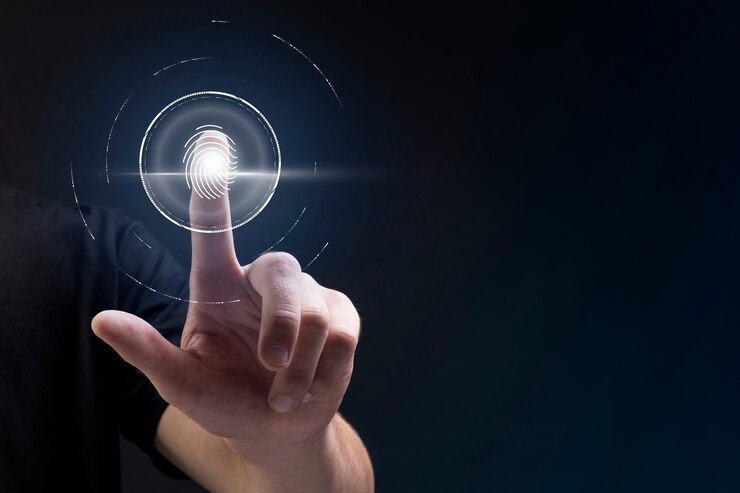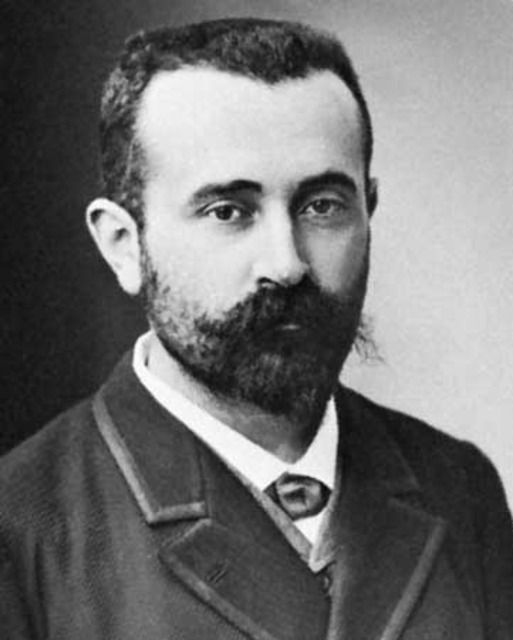Biometrics was pioneered in 1858 by Sir William Herschel, a British officer, who began using fingerprints for identification purposes. This revolutionary concept laid the foundation for the development of modern biometric technology.
Biometrics refers to the unique biological characteristics of individuals, such as fingerprints, facial features, or iris patterns, used for authentication and identification. Over the years, biometrics has become an integral part of various industries, including law enforcement, banking, and security.

The invention of biometrics has significantly enhanced the accuracy and efficiency of personal identification, leading to widespread adoption across different sectors. As technology continues to advance, biometrics is expected to play an increasingly crucial role in ensuring security and identity verification in our daily lives.
The Origins Of Biometrics
Biometrics, the science of analyzing and measuring unique physical and behavioral characteristics for identification purposes, has roots that stretch back centuries. Early civilizations employed rudimentary forms of biometrics for identification, and the concept has evolved over time into the sophisticated systems seen today.
Early Notions Of Identification
Early civilizations recognized the need for identifying individuals and developed basic methods to accomplish this. The use of physical traits as a means of identification dates back to ancient times, with practices such as using unique physical markings or measurements to distinguish one person from another.
One early example of utilizing physical traits for identification purposes is the use of fingerprints in ancient Babylon around 500 BCE. Clay tablets have been discovered with impressions of individuals’ fingerprints as a form of unique identification. This ancient practice laid the foundation for the modern usage of fingerprints in biometric systems.

Innovators In Biometric Identification
When it comes to the development of biometrics, it is essential to recognize the contributions of the key figures who laid the foundation for its evolution. These innovators played a significant role in shaping the field of biometric identification, paving the way for the advanced systems we use today.
Key Figures In The Development Of Biometrics
Biometric identification has been shaped by the work of several key figures who made significant contributions to the field, including Alphonse Bertillon and Sir Francis Galton.
Contributions From Alphonse Bertillon
Alphonse Bertillon revolutionized biometric identification through the development of anthropometry, the first scientific system used to identify individuals based on physical measurements. Bertillon’s method, commonly known as “Bertillonage,” involved precise measurements of body parts, such as the dimensions of the head, length of the middle finger, and other unique physical features. These measurements were recorded and used as a means of identification, laying the groundwork for modern biometric techniques.
The Impact Of Sir Francis Galton
Sir Francis Galton made significant contributions to the field of biometrics through his pioneering work in fingerprint identification. Galton’s research on fingerprints led to the establishment of fingerprint classification systems, which formed the basis of modern fingerprint identification methods. His comprehensive studies on fingerprints demonstrated the uniqueness and permanence of these patterns, solidifying their significance in biometric identification and forensic science.
Evolution Of Modern Biometric Technology
Biometrics has undergone a remarkable evolution from the early days of simple identification methods to the sophisticated technologies we rely on today. This captivating journey has seen revolutionary advancements that have transformed how we authenticate and identify individuals. Let’s delve into the pivotal stages that have shaped modern biometric technology, from the introduction of automated fingerprint identification systems (AFIS) to the emergence of facial recognition technology.
Revolutionary Advancements In Biometrics
The history of biometrics is marked by groundbreaking advancements that have redefined the way we verify identity. From traditional methods that relied on physical attributes to the adoption of digital technologies, the evolution of biometrics has paved the way for highly secure and convenient identification solutions.
Introduction Of Automated Fingerprint Identification Systems (afis)
The introduction of automated fingerprint identification systems (AFIS) represented a significant leap in biometric technology. This innovative system enabled rapid and accurate matching of fingerprints, revolutionizing law enforcement and forensic identification processes. AFIS not only enhanced the efficiency of fingerprint analysis but also laid the groundwork for the integration of biometrics into various sectors, including border control and access control systems.
The Emergence Of Facial Recognition Technology
Facial recognition technology has emerged as a game-changing innovation in the realm of biometrics. By leveraging advanced algorithms to analyze facial features, this technology has unlocked a new era of secure authentication and identification. Whether it’s unlocking smartphones, enhancing surveillance systems, or streamlining airport security, facial recognition has become an indispensable tool in the modern age.
Biometrics Today
Biometrics have rapidly evolved, becoming an integral part of our modern lives. From securing mobile devices to ensuring financial transactions, biometric technology has revolutionized the way we authenticate our identity. Let’s delve into the contemporary applications of biometrics and how this technology has transformed security systems, law enforcement, and financial institutions.
Contemporary Applications Of Biometric Technology
Biometric technology has seen widespread integration into various sectors, transforming the way we authenticate identity and access control. The applications of biometrics today are diverse and expansive, ranging from security systems to mobile devices and financial institutions.
Integration Of Biometrics In Security Systems And Law Enforcement
The integration of biometrics in security systems has significantly enhanced the ability to accurately identify and authenticate individuals. Law enforcement agencies utilize biometric technology for criminal identification, forensic analysis, and surveillance. This integration serves as a powerful tool in preventing and solving crimes, contributing to a safer and more secure society.
Biometric Authentication In Mobile Devices And Financial Institutions
With mobile devices becoming an indispensable part of daily life, biometric authentication has gained prominence in ensuring secure access. The seamless integration of fingerprint and facial recognition technology in mobile devices has elevated the level of security, offering a convenient and reliable authentication method. Additionally, financial institutions have embraced biometric technology to fortify transaction security and combat fraudulent activities, providing customers with a secure and efficient banking experience.
Frequently Asked Questions On Who Invented Biometrics?
Who Is The Father Of Biometrics?
Alphonse Bertillon is considered the father of biometrics for creating the first systematic identification system in the 19th century.
How Old Is Biometric Technology?
Biometric technology dates back to the 19th century, but it became more widely adopted in the 1960s. Its use has since grown across various industries for identification and security purposes.
Who Makes Biometrics?
Biometrics are made by various companies like Apple, Google, and Samsung. These companies develop biometric technologies for security and identification purposes.
When Was Voice Biometric Invented?
Voice biometric technology was invented in the early 1970s for use in speech recognition. This innovative technique has since evolved and is now widely used for secure authentication and identification purposes.
Conclusion
The history of biometrics is fascinating and complex. Over the years, many individuals have made significant contributions to its development. From early pioneers like Alphonse Bertillon to modern innovators, the evolution of biometrics continues to shape the way we approach security and identification.
Understanding its origins is crucial in appreciating its current and future potential.

